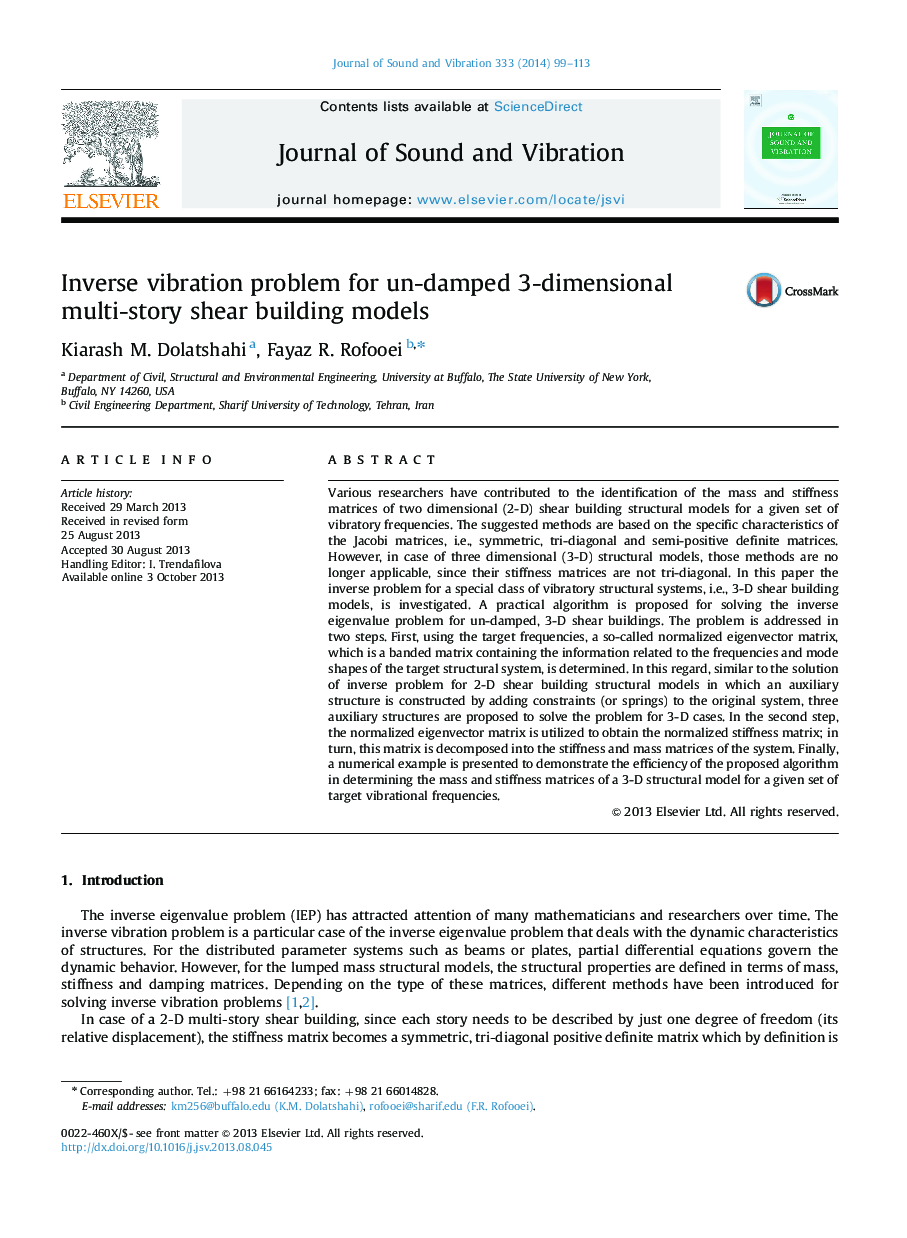| Article ID | Journal | Published Year | Pages | File Type |
|---|---|---|---|---|
| 288073 | Journal of Sound and Vibration | 2014 | 15 Pages |
•A practical algorithm is developed for solving the inverse eigenvalue problem for un-damped, 3-D shear building structures.•Three auxiliary structures are proposed to completely recover the eigenvector matrix of the target structural system.•The proposed procedure calculates the absolute values of the eigenvector elements. Therefore, their signs should be determined such that the eigenvectors are orthogonal.•There might be several answers for a given set of frequencies.•The efficiency of the proposed algorithm in determining the vibrational characteristics of the target structural system is evaluated using a numerical example.
Various researchers have contributed to the identification of the mass and stiffness matrices of two dimensional (2-D) shear building structural models for a given set of vibratory frequencies. The suggested methods are based on the specific characteristics of the Jacobi matrices, i.e., symmetric, tri-diagonal and semi-positive definite matrices. However, in case of three dimensional (3-D) structural models, those methods are no longer applicable, since their stiffness matrices are not tri-diagonal. In this paper the inverse problem for a special class of vibratory structural systems, i.e., 3-D shear building models, is investigated. A practical algorithm is proposed for solving the inverse eigenvalue problem for un-damped, 3-D shear buildings. The problem is addressed in two steps. First, using the target frequencies, a so-called normalized eigenvector matrix, which is a banded matrix containing the information related to the frequencies and mode shapes of the target structural system, is determined. In this regard, similar to the solution of inverse problem for 2-D shear building structural models in which an auxiliary structure is constructed by adding constraints (or springs) to the original system, three auxiliary structures are proposed to solve the problem for 3-D cases. In the second step, the normalized eigenvector matrix is utilized to obtain the normalized stiffness matrix; in turn, this matrix is decomposed into the stiffness and mass matrices of the system. Finally, a numerical example is presented to demonstrate the efficiency of the proposed algorithm in determining the mass and stiffness matrices of a 3-D structural model for a given set of target vibrational frequencies.
